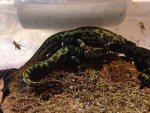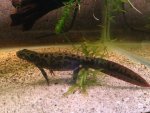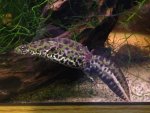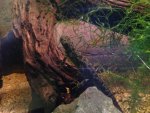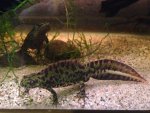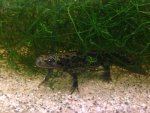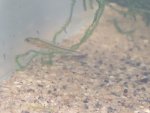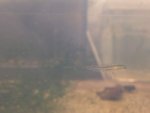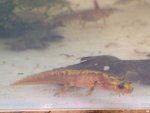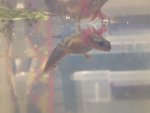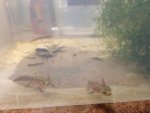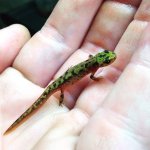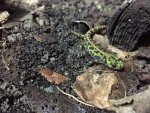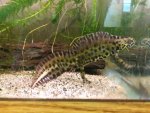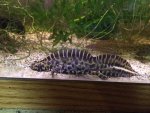otolith
Member
- Joined
- Dec 16, 2009
- Messages
- 484
- Reaction score
- 22
- Points
- 18
- Country
- United States
I've had this group of T. marmoratus for about 2 years now. This is their 2nd winter and they are showing very clear signs of maturing. They have been kept terrestrially in a naturalistic set up, summer high is about 68F and the lowest the basement got this winter is about 57F. I was hoping to get them colder for a few weeks but that doesn't look to be possible this year. The male is beginning to crest up and the females are huge and I am considering moving them to an aquatic setup for breeding. I am a bit hesitant since they did not get a real cold winter period but we are getting unseasonably warm weather and I am worried I'll lose my window if they are conditioned for laying now. All of my other crested newts are laying eggs right now so I am thinking it is worth a try.
I would love some feedback from some more experienced keepers. Here are a few pictures, most of the females are around 4.5"-5" long, the male is a bit smaller.
I would love some feedback from some more experienced keepers. Here are a few pictures, most of the females are around 4.5"-5" long, the male is a bit smaller.




